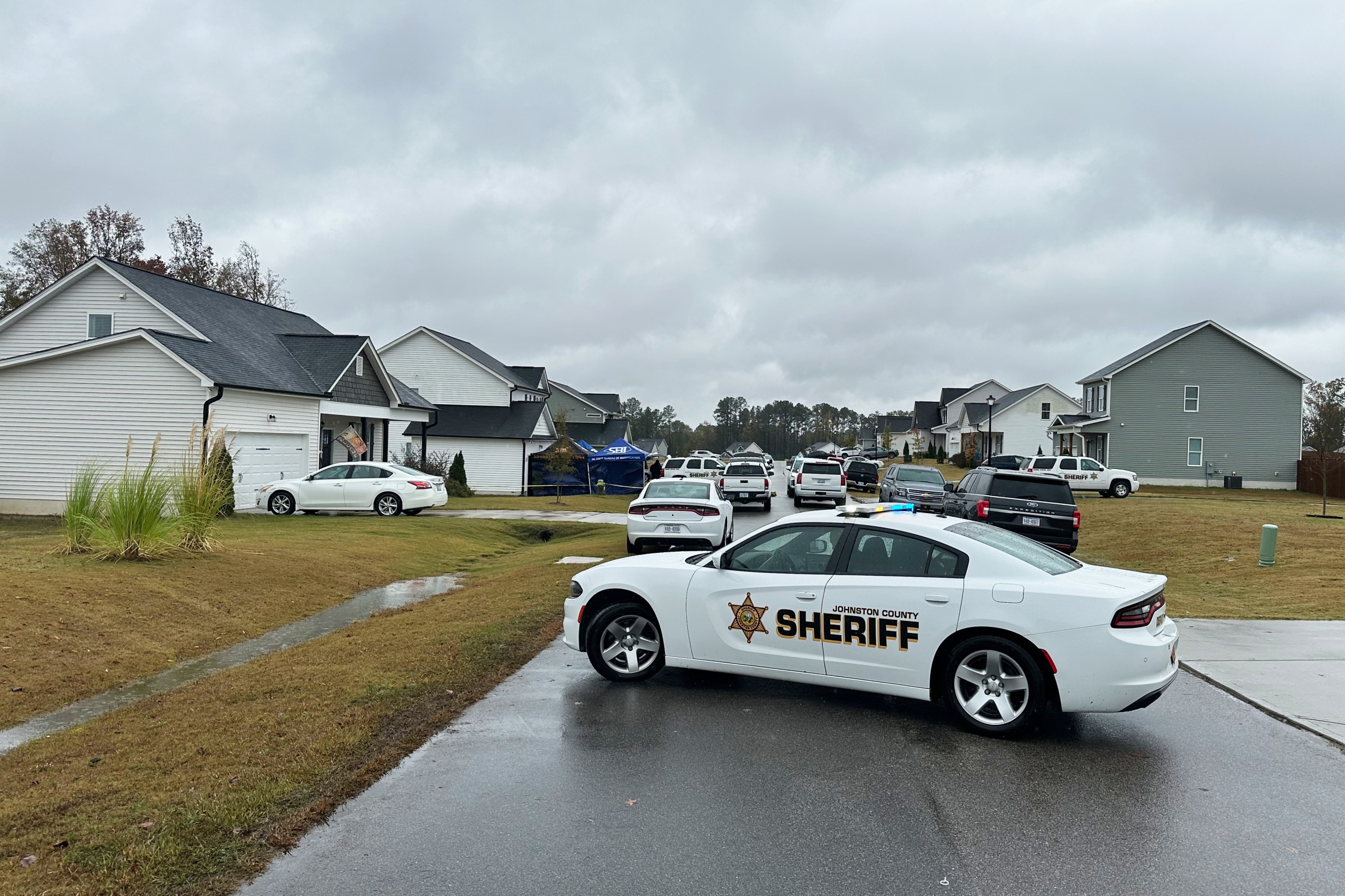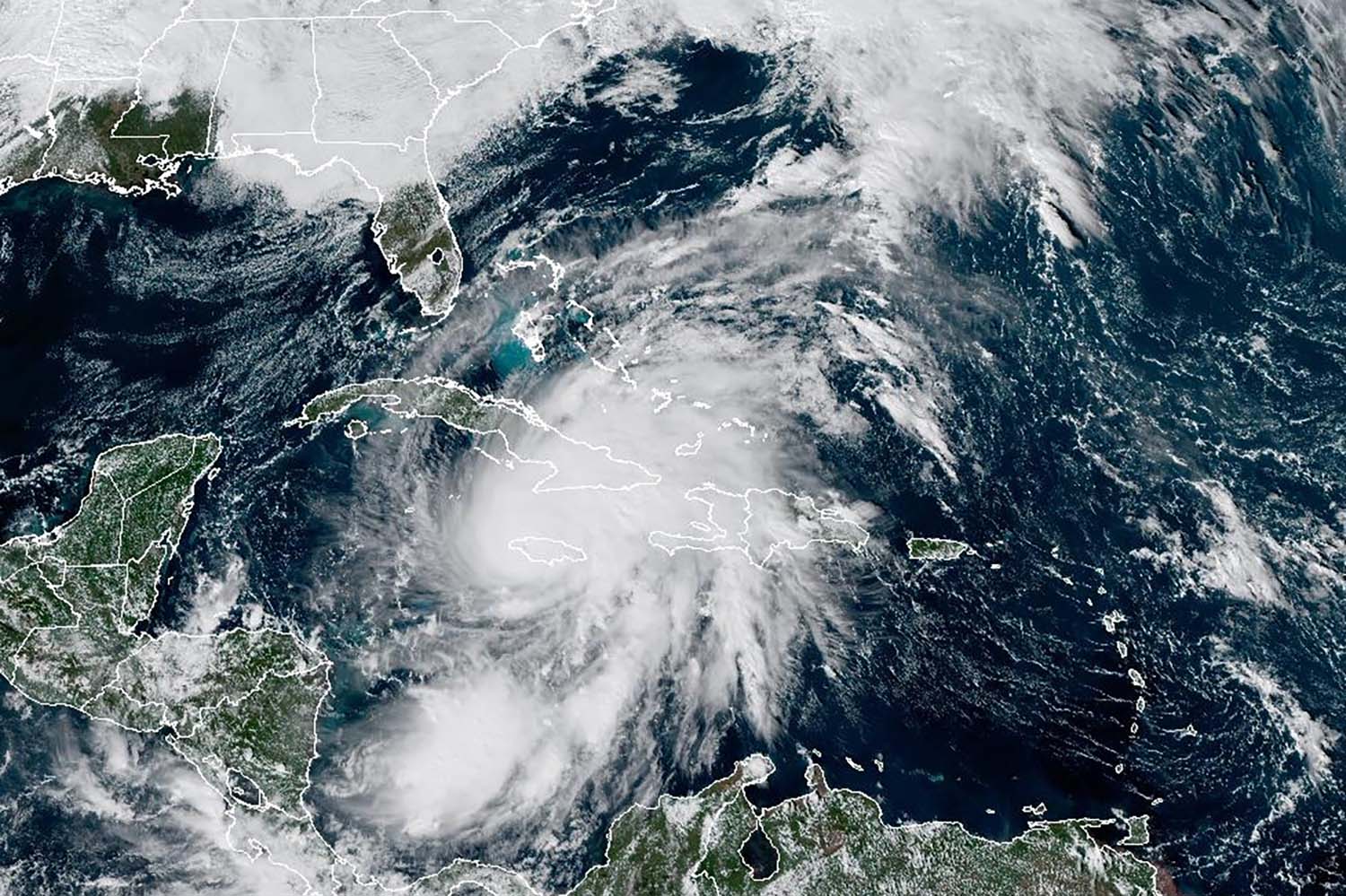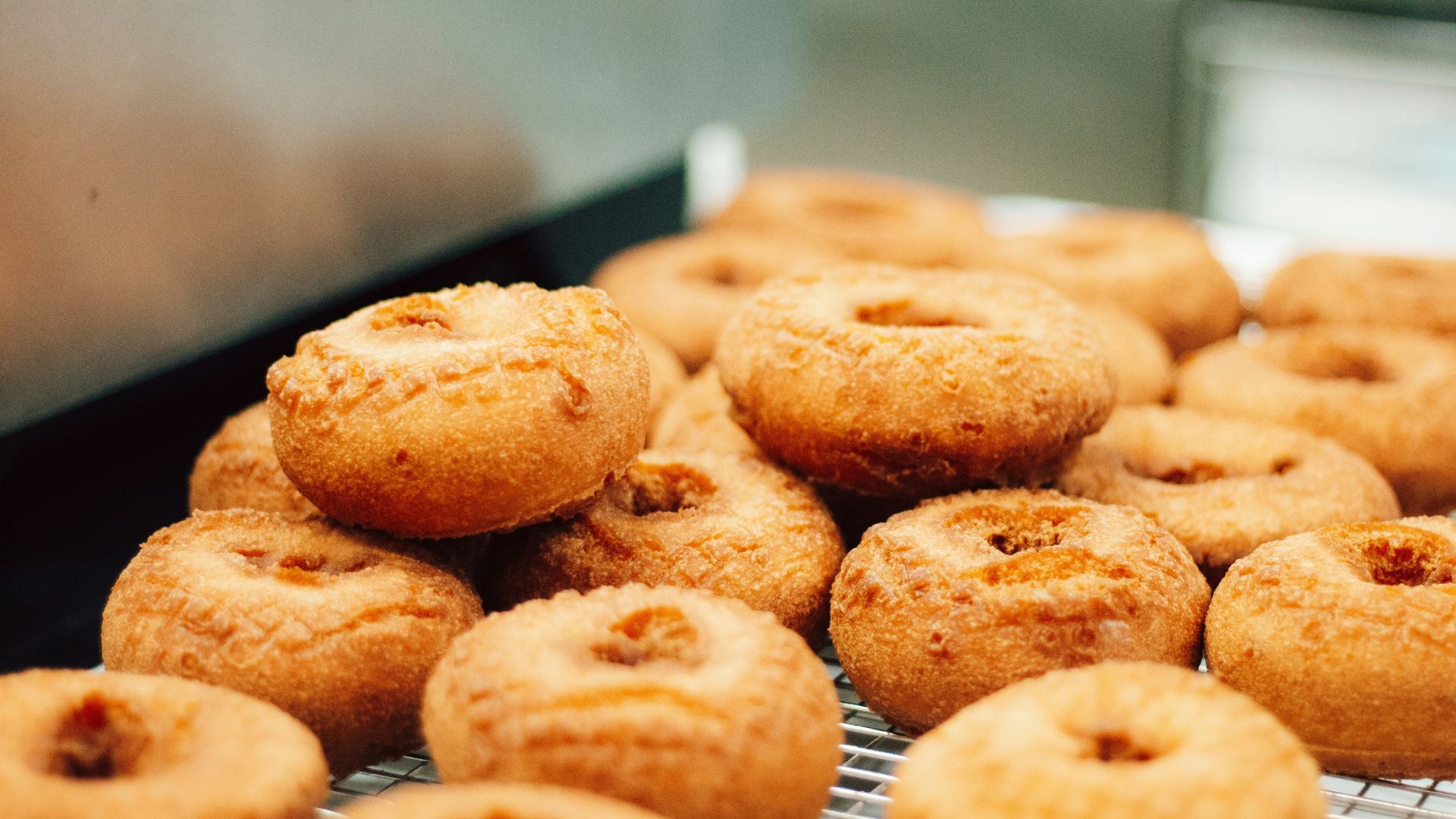Thought of the Day

All things are difficult before they are easy.


All things are difficult before they are easy.

By SEAN MURPHY Associated Press
OKLAHOMA CITY (AP) — Former Duke and Oklahoma City Thunder player Kyle Singler was charged Tuesday with misdemeanor assault in Oklahoma after his girlfriend told authorities he grabbed her head and shoved her to the ground.
Singler, 37, was arrested Thursday in the eastern Oklahoma town of Whitefield after someone called 911 to report Singler was chasing a woman outside a residence there. He was booked into the Haskell County jail and later released on $6,000 bond, jail records show.
Singler was charged Tuesday in Haskell County with one misdemeanor count of assault and battery in the presence of a child. Singler’s girlfriend told a sheriff’s deputy that Singler grabbed her by the head and shoved her to the ground, according to an arrest affidavit. Deputy Mitch Dobbs also reported he could observe finger outlines on the woman’s face and marks on her arm. The woman told Dobbs that Singler is the father of her young child, who was present during the incident, the affidavit states.
Dobbs reported Singler did not cooperate with authorities or give them a statement and appeared to be under the influence of narcotics.
Court and jail records don’t indicate whether Singler has an attorney. Singler’s former agent, Jason Ranne, said in an email he no longer represents Singler.
Singler’s arrest comes nearly a year after a cryptic Instagram post in which he said he feared for his life drew an outpouring of concern and support from former teammates and others.
Singler was on Duke’s 2010 national championship team and was named Most Outstanding Player of the NCAA Tournament.
He was the 33rd overall pick in the 2011 draft and started his career overseas before playing in the NBA. He played three seasons for the Detroit Pistons, who drafted him, and was on the All-Rookie second team in 2013. He played parts of four seasons for the Oklahoma City Thunder.

By ALLEN G. BREED, GARY D. ROBERTSON and JEFFREY COLLINS Associated Press
ZEBULON, N.C. (AP) — A North Carolina man was charged Tuesday with four counts of murder after telling authorities that he had killed his children and after sheriff’s deputies found human remains in the trunk of a vehicle in his home’s garage.
Wellington Delano Dickens III, 38, was being held without bond in the Johnston County Jail, according to the county’s sheriff’s office and court records.
Dickens had been charged earlier Tuesday in the death of one of his children, a sheriff’s office news release said. Three more murder counts were filed later in the day, records show.
Dickens called 911 on Monday evening and told the operator he had killed his children, the sheriff’s statement said.
Johnston County deputies responded, and as Dickens had told them, his 3-year-old son was alive inside the residence on the outskirts of Zebulon, which is about 25 miles (40 kilometers) east of Raleigh.
But Dickens also told deputies four of his other children were deceased inside the trunk of the vehicle inside the garage, the statement said.
The deputies discovered what the release described as “multiple bodies” in the trunk and said what were believed to be human remains inside had been there for a long time, the sheriff’s office said. The arrest warrants say authorities believe the victims were killed May 1.
The sheriff’s office said investigators believe Dickens killed three of his biological children, ages 6, 9 and 10, as well as his 18-year-old stepchild. Arrest warrants for three of the counts confirm the victims as 9, 10 and 18. The fourth arrest warrant provided no date of birth for the victim.
Court records show Dickens appeared before a judge Tuesday afternoon on the initial murder charge. Records showed he will be appointed an attorney, but a name was not immediately listed.
Dickens’ wife, Stephanie, died in April 2024, and Dickens said five children lived in their Zebulon home, according to court records from his wife’s estate. Her death came just over a year after Dickens’ father died when his car crashed into a box truck in Lee County, North Carolina, according to court records.
Dickens’ great uncle Charles Moore told WRAL-TV that Dickens was an Iraq War veteran. Moore said he hadn’t seen Dickens in about a year but that he seemed like he was doing fine.
A police cruiser with flashing lights blocked the road leading to Dickens’ address on Tuesday afternoon, with tents from the sheriff’s office and the State Bureau of Investigation erected in the driveway. The home sits in a recently built subdivision of one- and two-story houses. An old farmhouse sits not far from the subdivision’s entrance.
Some neighbors said they barely remembered seeing the family, especially after Dickens’ wife died. Miranda Dorta said she just saw the kids walk to and from the school bus, while neighbor Terry Fuller mowed their lawn a few times when the grass got high.
Although the subdivision’s oldest houses are only about 3 years old, it’s also a tight-knit neighborhood and many people could have helped if Dickens reached out, Fuller said.
“I’ve noticed the kids haven’t been out playing for quite some time, but hadn’t put two and two together. And I woke up to this this morning. It’s pretty awful,” Fuller said.
Previously known for its tobacco market and a railroad that came through town, Zebulon is quickly turning into a bedroom community of the Raleigh-Durham area.
Robertson reported from Raleigh, North Carolina, and Collins from Columbia, South Carolina

By JOHN MYERS JR. and DÁNICA COTO Associated Press
KINGSTON, Jamaica (AP) — Heavy floodwaters swept across southwestern Jamaica, winds tore roofs off buildings and boulders tumbled into roads Tuesday as Hurricane Melissa came ashore as a catastrophic Category 5 storm, one of the strongest Atlantic hurricanes on record.
Desmond McKenzie, deputy chairman of Jamaica’s Disaster Risk Management Council, urged people to seek shelter and stay indoors as the storm crosses the island.
“Jamaica, this is not the time to be brave,” he said.
The streets in the capital, Kingston, remained largely empty as Melissa approached, save for the lone stray dog crossing puddles and a handful of people walking briskly under tree branches waving in a stiff wind.
The Jamaican government said it had done all it could to prepare as it warned of devastating damage from the strongest hurricane to hit the island since recordkeeping began 174 years ago.
“There is no infrastructure in the region that can withstand a Category 5,” Prime Minister Andrew Holness said. “The question now is the speed of recovery. That’s the challenge.”
Landslides, fallen trees and numerous power outages were reported as Melissa came ashore near New Hope, with officials in Jamaica cautioning that the cleanup and damage assessment could be slow. The storm is expected slice diagonally across the island and head for Cuba.
Massive wind damage is expected in Melissa’s core and Jamaica’s highest mountains could see gusts of up to 200 mph (322 kph), said Michael Brennan, director of the U.S. National Hurricane Center in Miami.
“It’s going to be a very dangerous scenario,” he said, warning that there would be “total building failures.”
Hurricane Melissa’s 185 mph (295 kph) winds and 892 millibars of central pressure tied two records for the strongest Atlantic storm on landfall. The pressure — the key measurement meteorologists use — ties 1935’s Labor Day hurricane in Florida. The wind speed ties the 1935 hurricane and 2019’s Hurricane Dorian, said hurricane scientists Phil Klotzbach of Colorado State University and Brian McNoldy of the University of Miami.
“It’s been a remarkable just a beast of a storm,” Klotzbach told The Associated Press.
On Tuesday afternoon, Melissa had top sustained winds of 165 mph (270 kph) and was moving north-northeast at 8 mph (13 kph), according to the National Hurricane Center. The hurricane was centered about 20 miles (35 kilometers) south-southwest of Montego Bay, Jamaica, and about 230 miles (370 kilometers) southwest of Guantánamo, Cuba.
A life-threatening storm surge of up to 13 feet (4 meters) is expected across southern Jamaica, with officials concerned about the impact on some hospitals along the coastline. Health Minister Christopher Tufton said some patients were relocated from the ground floor to the second floor, “and (we) hope that will suffice for any surge that will take place.”
One man called a local radio station and said he urgently needed to help a woman in western Jamaica who had gone into labor as the storm prepared to make landfall. The show’s host pleaded with listeners to let the man know the safest hospital for the woman before an obstetrician called in to provide detailed directions on how to deliver a baby, if necessary.
Colin Bogle, a Mercy Corps adviser based near Kingston, said most families are sheltering in place despite the government ordering evacuations in flood-prone communities. He was sheltering with his grandmother in Portmore, where everything went dark earlier in the morning after a loud explosion.
“The noise is relentless,” he said. “People are anxious and just trying to hold on until the storm passes.”
McKenzie said the government was prepared for rescues immediately after the storm passes through: “We have boats, helicopters, you name it.”
The storm already was blamed for seven deaths in the Caribbean, including three in Jamaica, three in Haiti and one in the Dominican Republic, where another person remains missing.
More than 240,000 customers were without power before landfall and about one-fourth of the telecommunications system was offline, said Darryl Vaz, transport and energy minister. He said crews will clean and run tests at the island’s two main international airports Wednesday in hopes of receiving emergency relief flights as early as Thursday.
U.N. agencies and dozens of nonprofits had food, medicine and other essential supplies positioned as they awaited a distribution rush after the storm.
Matthew Samuda, Jamaica’s water and environment minister, said he had more than 50 generators available to deploy after the storm, but warned people to set aside clean water and use it sparingly.
“Every drop will count,” he said.
Melissa was expected to make landfall in eastern Cuba late Tuesday or early Wednesday. Up to 20 inches (51 centimeters) of rain were forecast in areas, along with a significant storm surge along the coast.
Authorities in eastern Holguín province prepared to evacuate more than 200,000 people Tuesday and evacuated a similar number of people earlier from the town of Banes.
Reports on social media and state television showed blue and white buses ferrying evacuees to shelter early Tuesday. Families clutched babies and belongings and elderly people steadied themselves with canes as they disembarked.
“This phenomenon is very dangerous,” Deputy Prime Minister Eduardo Martínez said in a statement. “It is unprecedented.”
Cuban officials said Monday that they would evacuate more than 600,000 people from the region, including Santiago, the island’s second-largest city.
Melissa also has drenched the southern regions of Haiti and the Dominican Republic, with a tropical storm warning still in effect for Haiti. The hurricane was forecast to turn northeast and strike the southeast Bahamas by Wednesday evening.
___
Coto reported from San Juan, Puerto Rico. Associated Press writers Geir Moulson in Berlin, Andrea Rodríguez in Havana and Seth Borenstein in Washington contributed to this report.

This simple recipe for apple cinnamon donuts has just the right amount of sugar, spice and everything nice. They’re perfect for breakfast, dessert, or just treating yourself.
1. Preheat the oven
Preheat oven to 350°F and grease a donut pan.
2. Mix dry ingredients
In a bowl, whisk together flour, baking powder, baking soda, cinnamon, nutmeg, and salt.
3. Mix wet ingredients
In another bowl, whisk the egg, brown sugar, applesauce, oil, buttermilk, and vanilla until smooth.
4. Combine the mixtures
Stir the dry ingredients into the wet until just combined, then fold in grated apple.
5. Bake
Spoon or pipe the batter into the donut wells (about ¾ full), then bake the donuts for 10–12 minutes, or until the tops spring back when lightly pressed.
6. Coat the donuts and enjoy!
Let the donuts cool for 5 minutes. Then, mix the cinnamon and sugar together. Next, brush each donut lightly with melted butter and dip in the cinnamon-sugar mixture. Then, you’re ready to enjoy these delicious fall treats!

By JOSH BOAK and CHRIS MEGERIAN Associated Press
TOKYO (AP) — President Donald Trump began one of his busiest days of his Asia trip on Tuesday by warmly greeting the new Japanese prime minister, with plans to later speak to U.S. troops aboard an aircraft carrier and mingle with business leaders.
Although Trump is visiting one of America’s most steadfast allies in Asia, there’s no shortage of uncertainty while he’s there. Sanae Takaichi, who became the country’s first female prime minister only days ago, must solidify her relationship with Trump while defending her country’s economic interests. Trump is trying to nail down $550 billion in Japanese investment as part of a trade agreement.
As Trump and Takaichi met on Tuesday, they shook hands and he paid her a compliment: “That’s a very strong handshake.”
In return, Takaichi talked about watching the third game of the U.S. World Series before the event. She said Japan would give Washington 250 cherry trees next year to honor America’s 250th anniversary, as well as fireworks from Akita Prefecture for July 4 celebrations.
She used her early remarks to mention former Japanese Prime Minister Shinzo Abe, her archconservative mentor who forged a strong bond with Trump during his first term through their shared interest of golf.
“As a matter of fact, Prime Minister Abe often told me about your dynamic diplomacy,” she said.
Trump called her role as Japan’s first woman prime minister as a “big deal,” putting an emphasis on the U.S. commitment to Japan. While the president in the past has publicly scolded his foreign counterparts, he had nothing but praise for Takaichi.
“Anything I can do to help Japan, we will be there,” Trump said. “We are an ally at the strongest level.”
Takaichi is primed for a charm offensive, including a potential purchase of Ford F-150 trucks. Reporters arriving for the event were hustled past a gold-hued Ford F-150 as well as what appeared to be white American-made Toyota vehicles parked outside the Akasaka Palace, which is Tokyo’s guest house for visiting foreign leaders.
Trump has often complained that Japan doesn’t buy American vehicles, which are often too wide to be practical on narrow Japanese streets.
Both leaders signed the implementation of an agreement for the “golden age” of their nations’ alliance. When the document was held up after signing, it ran to less than one page and reaffirmed the earlier framework by which the U.S. would tax goods imported from Japan at 15% and the creation of a $550 billion fund for Japan to invest in the U.S.
Trump and Takaichi then signed a second agreement, this one laying out a U.S.-Japan framework for securing the supply of critical minerals and rare earths. That agreement suggested that some of the investment dollars would go to the development of rare earths needed for advanced technologies.
White House press secretary Karoline Leavitt told reporters that Takaichi would be nominating Trump for the Nobel Peace Prize. The two leaders also met with people whose family members were abducted by North Korea.
The Japanese delegation made the strategic choice to serve American beef and rice during a working lunch that was mixed with Japanese ingredients, where the two leaders also discussed efforts to end Russia’s war in Ukraine.
Although Trump has focused his foreign policy toward Asia around tariffs and trade, he’s also speaking aboard the USS George Washington, an aircraft carrier docked at an American naval base near Tokyo.
Trump arrived in Tokyo on Monday, when he met with the emperor in a ceremonial visit. He was previously in Kuala Lumpur, Malaysia, where he participated in the annual summit of the Association of Southeast Asian Nations.
The gathering was an opportunity for Trump to celebrate an expanded ceasefire agreement between Thailand and Cambodia, which skirmished along their disputed border earlier this year. Trump had pressured them to stop fighting by threatening to withhold trade agreements.
There were also signs that tensions between the U.S. and China were cooling ahead of a planned meeting between Trump and Chinese leader Xi Jinping, which is expected to take place in South Korea later this week. Top negotiators from each country said a trade deal was coming together, which could prevent a potentially damaging confrontation between the world’s two largest economies.
Details were scarce, and it was unclear how much any agreement would resolve long-standing issues, or if it would return the relationship to the status quo before recent confrontations. China has restructured the export of rare earth elements that are critical for high-tech manufacturing, and Trump responded by threatening tariffs that even he admits would be unsustainable.
Trump is scheduled to leave Wednesday for South Korea, which is hosting the Asia-Pacific Economic Cooperation summit.
___
Megerian reported from Seoul, South Korea. Mayuko Ono and Mari Yamaguchi in Tokyo contributed to this report.

By RIO YAMAT AP Airlines and Travel Writer
A shortage of air traffic controllers caused more flight disruptions Monday around the country as controllers braced for their first full missing paycheck during the federal government shutdown.
The Federal Aviation Administration reported staffing-related delays on Monday afternoon averaging about 20 minutes at the airport in Dallas and about 40 minutes at both Newark Liberty International Airport and Austin-Bergstrom International Airport. The delays in Austin followed a brief ground stop at the airport, meaning flights were held at their originating airports until the FAA lifted the stop around 4:15 p.m. local time.
The FAA also warned of staffing issues at a facility in Jacksonville, Florida, that could cause some problems.
Just last week, U.S. Transportation Secretary Sean Duffy had predicted that travelers would start to see more flights delayed and canceled as the nation’s air traffic controllers work without pay during the shutdown, which is nearing the one-month mark.
During a weekend appearance on the Fox News program “Sunday Morning Futures,” Duffy said more controllers were calling in sick as money worries compound the stress of an already challenging job.
“And that’s a sign that the controllers are wearing thin,” Duffy said.
Earlier Monday, flights were also briefly delayed at Los Angeles International Airport, one of the busiest in the world. The disruptions emerged a day after the FAA had issued a temporary ground stop at LAX for about two hours due to a shortage of controllers. Aviation analytics firm Cirium said about 72% of the flights scheduled Sunday at LAX took off within 15 minutes of their scheduled departure times.
Most controllers are continuing to work mandatory overtime six days a week during the shutdown without pay, the National Air Traffic Controllers Association said Monday. That leaves little time for a side job unless controllers call in sick to the FAA.
Union members were expected to gather Tuesday at major airports across the U.S., including in New York City and Atlanta, to pass out leaflets to passengers detailing how the shutdown is negatively impacting the national aviation system and the workers who keep it running safely. The action coincides with controllers’ first full missing paycheck since the shutdown began.
Some U.S. airports have stepped in to provide food donations and other support for federal aviation employees working without pay, including controllers and Transportation Security Administration agents.
Before the shutdown, the FAA was already dealing with a shortage of about 3,000 air traffic controllers. Nick Daniels, president of NATCA, has said the agency had reached “the lowest staffing we’ve had in decades of only 10,800.”


Age and time do not wait for people.

Celebrate the fall season with this classic and fun dessert!
1. Prepare the apples
Wash and thoroughly dry the apples to remove any wax. Insert wooden sticks into the tops and set aside on a parchment-lined baking sheet.
2. Make the caramel
In a medium heavy-bottomed saucepan, combine sugar, brown sugar, butter, corn syrup, and heavy cream. Stir over medium heat until butter melts and mixture is smooth. Then, attach a candy thermometer to the side of the pan and cook without stirring until the caramel reaches 245°F (118°C). This usually takes about 10–12 minutes. Remove from heat.
3. Finish the caramel
Stir in vanilla extract and salt. Let the caramel cool slightly for about 3–5 minutes so it thickens enough to coat the apples.
4. Dip the apples
Tilt the saucepan slightly and dip each apple, turning to coat evenly. Let the excess drip off, then place each apple onto the prepared parchment sheet.
5. Add toppings and enjoy!
Quickly roll in nuts, sprinkles, or other toppings before the caramel sets. Let the apples set completely at room temperature for about 30 minutes, then enjoy this fall treat!


Patience is a bitter plant, but its fruit is sweet.